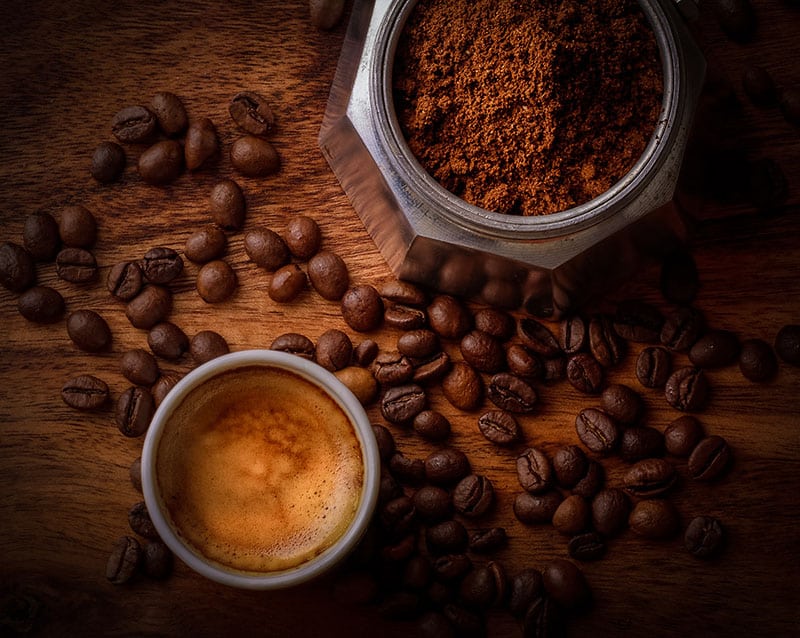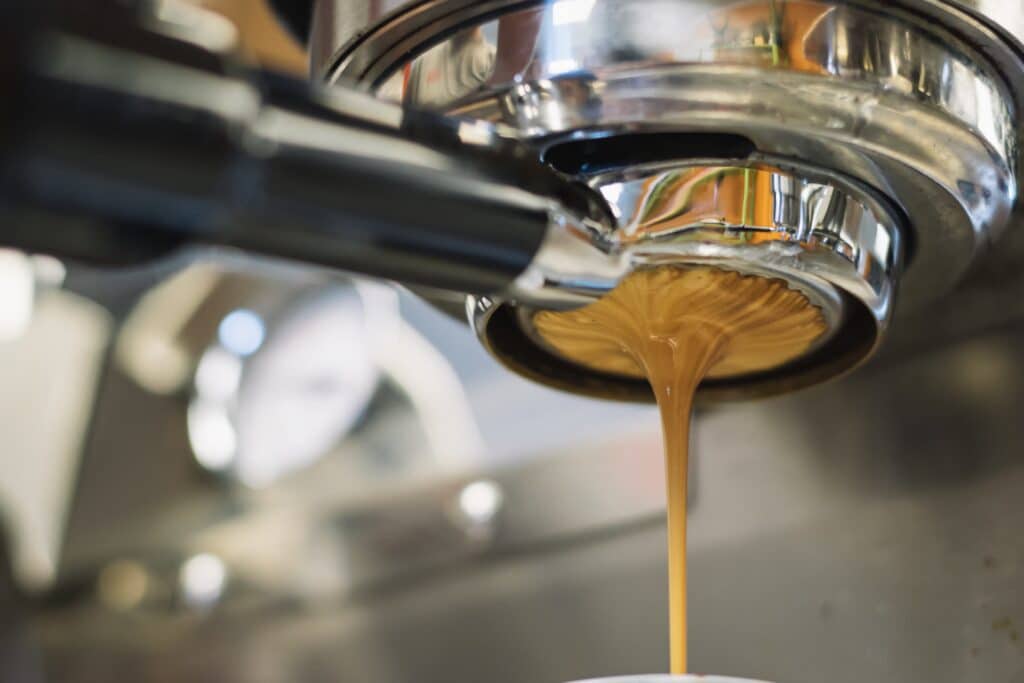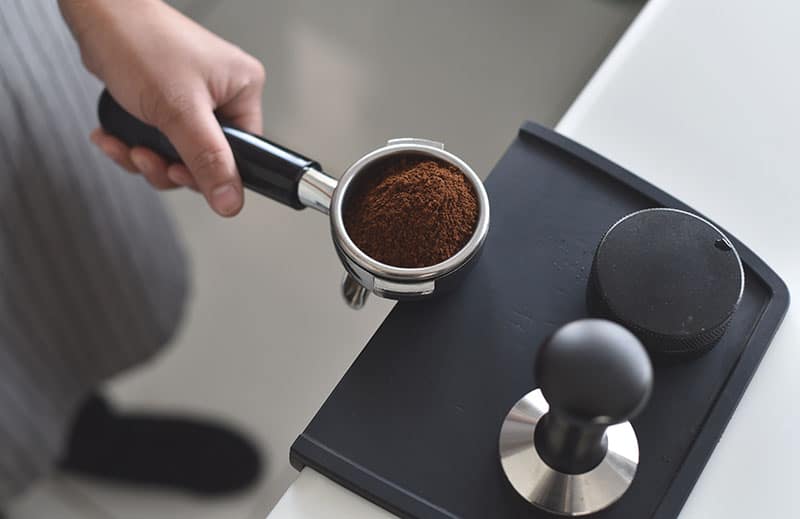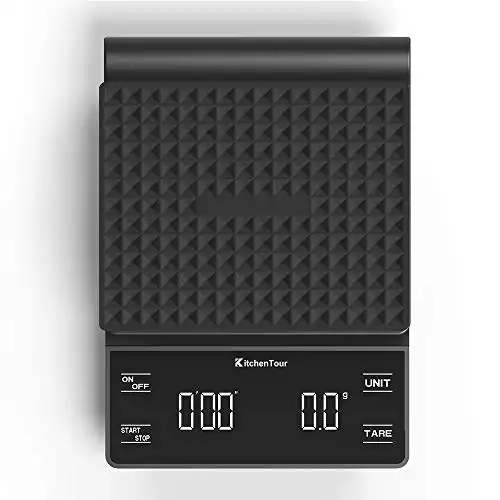Most people love a strong cup of coffee, particularly if they’re waking up in the morning and need something to get them going. For some, they parse this caffeination between two cups of medium-roast coffee or a single large cup of dark roast from somewhere like Starbucks.
Espressos were first popularized in the late 19th and early 20th centuries by two Italian men. Angelo Moriondo and Luigi Bezzera are created with co-creating the first ‘espresso’ machine. Espresso machines produce espresso by forcing highly-pressurized water through finely ground coffee to produce a thick coffee that is almost sludge-like in it’s consistency.
Espresso is most commonly served to those who enjoy strong coffee and are often in ‘shots’ – which are specific measurements. Single shots and double shots of espresso are among the most common in the coffee industry.
Here is the table of measurements for a certified Italian espresso, according to the Italian Espresso National Institute:
| Parameter | Value |
| Portion of Ground Coffee | 7.5g (0.25+0.2oz) |
| Water exit temperature from unit | 90 C (194 F) |
| Temperature in cup | 70 C (158 F) |
| Entry water pressure (PSI) | 10 bar (PSI) |
| Percolation time | 30 seconds |
| Volume in cup | 27.5ml (0.92 fluid ounces) |
If you like espresso, you’ll know that there’s nothing quite like that first jolt in the morning to get you started. And it’s creamy. The thick sludgy top is the icing on the proverbial cake. But, if you’ve been struggling to get your measurements right for espresso, or any other type of coffee, this is the guide for you.
The Different Ways to Measure Coffee

There are many different ways to measure coffee. Measuring coffee is done by measuring two sets of ingredients: dry ingredients – these are coffee beans and ground coffee – and liquid ingredients – these are the finished coffee product – either as traditional brewed coffee, or as espresso shots.
Making a cup of drip coffee from start to finish is usually a process in and of itself, and there are so many different ways to make it. That’s why your local coffee shop offers brewed coffee and espressos, as well as other types of caffeinated beverages such as cappuccinos and lattes (coffee made with steamed milk),
Your first step is to take coffee from its raw form – beans – to a ground form. This is done by grinding to produce a finely ground form of coffee. Your coffee maker may come with a grinder sold with it or sold separately. If you’re a connoisseur or looking to get into making your own coffee, buying a grinder and grinding your own beans is the perfect way to start making cups of coffee.
How Do You Measure Beans and Ground Coffee In Brewed Coffee And Espresso Shots?
There are four different types of coffee beans. For the sake of brevity, we’ll talk about two of the most popular beans: Arabica coffee beans and Robusta coffee beans. Robusta coffee beans are often used to produce darker roasts, because they have a higher caffeine content than Arabica beans, as they are grown at lower altitude.
Robusta beans tend to be cheaper than Arabica beans, due to their resistance to pests and weather conditions. Robusta beans are used almost exclusively in espressos due to their rich flavor and ‘crema’ that they produce atop the finished coffee.
All beans are measured in grams when making coffee. Typically, for a brewed coffee of six ounces, you’ll want to use roughly 10 grams of beans. The ground beans then produce roughly two teaspoons of coffee grinds.
For an ounce of espresso, you would typically measure 6 – 8 grams of beans – which produces 1.5 – 2 tbsp of coffee. For a double shot of espresso, these values would double.
How You Brew Your Coffee Also Matters
How you brew your coffee when trying to achieve that perfect cup of espresso also matters. Depending on how much ground coffee your machine allows for (many will have an upper limit, usually measured by tablespoon), you may brew types of espresso shots differently.
Until you get the hang of it, you’ll want to carefully measure out your finely-ground coffee beans. It’s best to buy a digital scale to use, as these have gram measurements pre-programmed in – no conversion required! If you’re grinding a whole pile of beans at once (and then using these ground beans to create your caffeine beverages of choice), you may find that the beans lose their freshness after a few days.
Using fresh coffee beans every time you make a cup is always best. Coffee lovers all over the world always prefer the freshest brew.
Liquid Measurements Conversions:

If you need to make some conversions (which you’ll need to do before you start the brewing process), here are a few simple measurements to bear in mind.
- One fluid ounce is equal to two tablespoons.
- One cup is equal to sixteen tablespoons.
- One tablespoon is equal to half a fluid ounce.
- One cup is equal to eight fluid ounces.
Dry Measurements Conversions:

Measuring your pre-ground beans and post-ground coffee extracts is almost as important as the finished product. Too much coffee? Too bitter or sweet-tasting caffeine (depending on the type of bean you’re using). Too little coffee? Your coffee will be weak, and you may need to make another cup unnecessarily!
Here are some of the basic conversions for your dry ingredients.
- One ounce is equal to 28.6 grams.
- One tablespoon is equal to 14.3 grams.
- 14.3 grams is equal to half an ounce.
- Two tablespoons is equal to one ounce.
Knowing the amount of coffee beans to put in your grinder will allow you to make fresh coffee with a delicious taste. Knowing the amount of ground coffee to make a perfect espresso shot will stop you from making your espresso too bitter, as can happen when espresso is made with too much coffee.
But How Much Is a Coffee Scoop?
A level scoop of coffee is typically two tablespoons.
How to Measure to Make the Perfect Cup Every Time
Buy a digital scale! This is the easiest way to measure out your ingredients accurately. Furthermore, when we say a tablespoon, we mean measured by a set of measuring spoons (the kind you’d find in a chef’s kitchen), not your ice cream tablespoon from the cutlery drawer.
If you don’t have a set of kitchen tablespoons, go buy one! You can use those black scoops that you find included with every ground coffee product ever to measure out your beans. Make sure that you measure level and never count your beans by hand. It’s a ridiculous way to count beans and totally disregards the fact that beans vary in size, roast type (dark, medium or light roast) and shape. Each individual bean will have a different effect on the taste of the country – and if they’re going to be ground anyway, then there’s no point counting them out individually.
Coffee Beans: Whole vs. Ground
As mentioned above, there are four types of coffee beans – Arabica and Robusta are two of the world’s most popular. You can make coffee from whole coffee beans, but it will take a long time. It’s far easier to grind your beans into a fine powder, which activates them and produces a beautiful single-serving espresso.
It’s All About the Ratio
The difference between producing a regular coffee and producing coffee that a coffee aficionado would enjoy is all about the ratio when producing espressos. There is a so-called “Golden Ratio” when producing coffee. This is one gram of coffee per 18ml of water.
To make your standard brewed coffee, you’ll need 3/4 cups of hot water per two tablespoons of coffee. While this Golden Ratio is the standard in the coffee industry, if you’re just casually producing at home, you can make your coffee a little stronger, or weaker, to your liking.
Try a 1:10 ratio (grams x ml of water) for a stronger blend. There are plenty of different ways to make coffee that can affect the strength, too – including making French press coffee – a different brewing method to make coffee using ground coffee.
Espresso Single Shot vs. Double Shot
A single shot of espresso denotes one fluid ounce of hot water, pressurized and forced through seven grams of coffee grounds – usually held within a ‘puck’ – a circular container made for holding ground coffee.
A double shot of espresso would be two fluid ounces of hot water, forced through 14 grams of coffee grounds, according to the Italian espresso methodology. More coffee, higher caffeine intake, perkier, happier self – hopefully!
But How Much Is An Actual Shot of Espresso?
An actual shot of espresso is made using a ratio of 1:2, water to coffee grounds. However, some coffee drinkers will use a 1:3 ratio, or 1:1.5 ratio, depending on how strong they like their coffee. Different coffee recipes can also cause some variation when making espresso-based drinks.
How Many Ounces in a Shot of Espresso?
A single shot of espresso denotes one fluid ounce of hot water.
Espresso Is Key To Many Coffee Drinks
One thing about espresso is that it isn’t just a caffeinated beverage alone. It’s also a key ingredient in many coffee recipes.
- A latte is 1/3 espresso, and 2/3 steamed milk.
- A macchiato is an espresso coffee made with double-shots of espresso and topped with steamed milk (rather than mixed in).
- A flat white is coffee, mixed with espresso and topped with steam milk and a layer of foam.
- A mocha is made with espresso coffee, steamed milk and either hot chocolate or chocolate syrup.
As you can see, an espresso coffee is a key component in a variety of your favorite specialized coffee beverages!
We hope our guide to measuring espresso has given you the knowledge to make your own, save some money, experiment and have fun making a delicious coffee, day after day.


